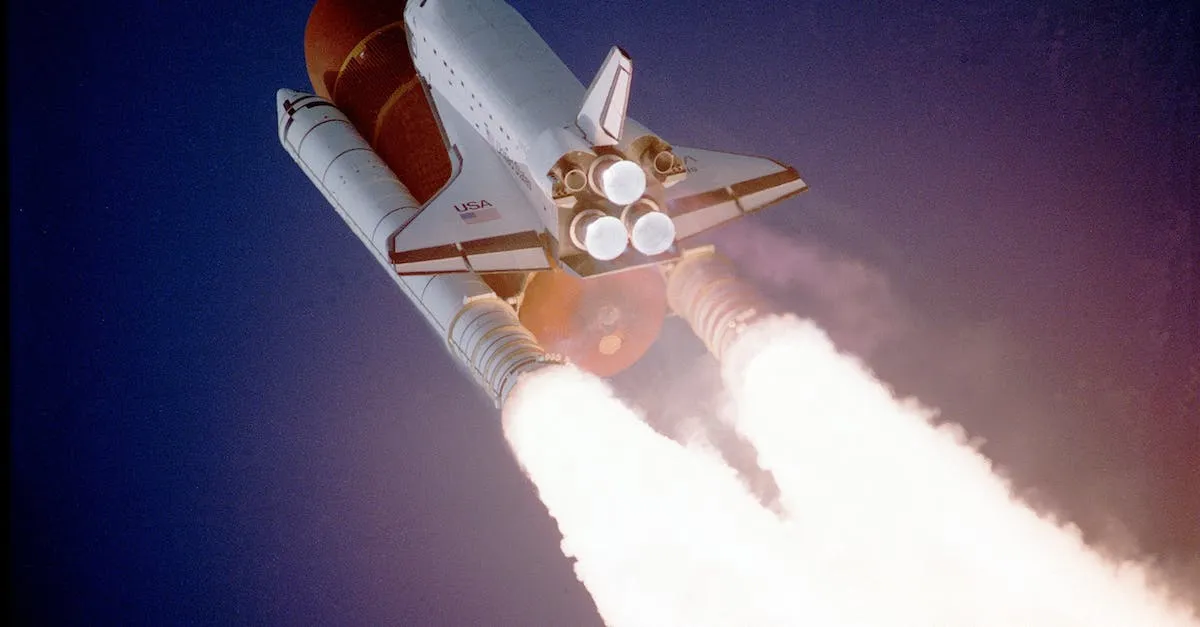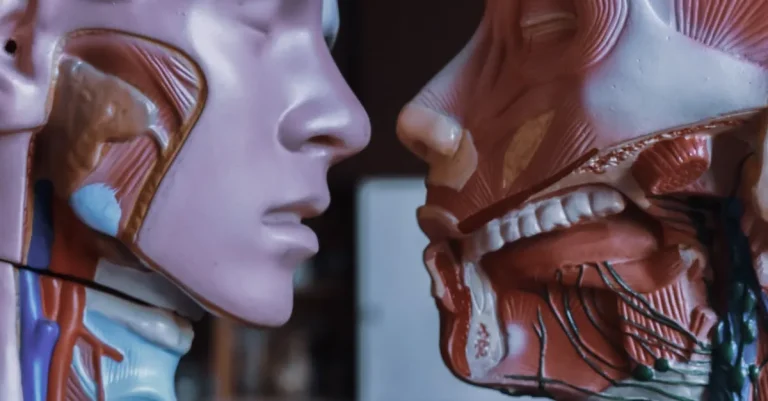Demystifying Rocket Science: Just How Difficult Is It?
Space travel and rocket science have an aura of complexity and mystique in popular culture. The phrase “it’s not rocket science” is often thrown about to imply that a concept is relatively simple or straightforward. But exactly how difficult is the real science behind rockets?
In short: Extremely. Rocket science requires an intricate blend of advanced physics, mathematics, aerospace engineering, and computer science. If you’re curious to learn more about the demanding fields and complex concepts that real-world rocket scientists tackle, read on for a comprehensive overview.
Understanding Advanced Physics Concepts
When it comes to rocket science, understanding advanced physics concepts is crucial. These concepts form the foundation of the field and are essential for designing and launching successful rockets. Let’s delve into some of the key concepts that are integral to rocket science.
Newton’s Laws of Motion
One of the fundamental principles in rocket science is Newton’s Laws of Motion. These laws explain how objects move and interact with each other. The three laws state that an object will remain at rest or continue to move in a straight line unless acted upon by an external force, the rate of change of momentum of an object is directly proportional to the force applied to it, and for every action, there is an equal and opposite reaction.
These laws are fundamental to understanding the forces involved in rocket propulsion and trajectory calculations.
Thermodynamics
Thermodynamics is another crucial concept in rocket science. It deals with the study of heat transfer and energy conversion. Rockets rely on the principles of thermodynamics to convert chemical energy from propellants into the kinetic energy needed for propulsion.
Understanding thermodynamics allows engineers to optimize rocket engines for maximum efficiency and performance.
Propulsion
Propulsion is at the heart of rocket science. It involves the study of how rockets generate thrust to overcome gravitational forces and achieve escape velocity. Rocket engines work by expelling high-velocity exhaust gases in the opposite direction, according to Newton’s third law of motion.
The design and efficiency of propulsion systems play a critical role in determining a rocket’s performance and payload capacity.
Aerodynamics
Aerodynamics is the study of how objects move through the air or any fluid. In rocket science, it is vital to understand the aerodynamic forces acting on a rocket during its ascent and re-entry. Factors such as drag, lift, and stability need to be carefully considered to ensure the rocket can maneuver effectively and withstand the extreme conditions it encounters during its flight.
Astrophysics
Astrophysics plays a significant role in rocket science, particularly in the exploration of space. It involves the study of celestial objects, their properties, and the physical processes that occur in the universe.
Understanding astrophysics helps scientists and engineers navigate the challenges of space travel, such as gravitational forces, radiation, and the behavior of celestial bodies.
By gaining a solid understanding of these advanced physics concepts, researchers and engineers can continue to push the boundaries of rocket science and explore the vast expanse of space. If you’re interested in learning more about rocket science and its various concepts, you can visit reputable websites like NASA or SpaceX for further information and resources.
Applying Complex Mathematics
When it comes to rocket science, one cannot underestimate the importance of complex mathematics. The field of aerospace engineering heavily relies on mathematical principles to design and analyze the behavior of rockets.
This article will explore some of the key areas of mathematics used in rocket science.
Calculus
Calculus plays a fundamental role in understanding the motion of rockets. By utilizing calculus, engineers can determine the velocity, acceleration, and trajectory of a rocket at any given point in time.
This helps in predicting the path that a rocket will take and enables engineers to make necessary adjustments to ensure a successful launch. Calculus is also used in optimizing fuel consumption and maximizing the efficiency of rocket engines.
Differential Equations
Differential equations are another essential tool in rocket science. They describe the relationship between the rate of change of a variable and the variables themselves. Rocket engineers use differential equations to model the behavior of various factors such as airflow, pressure, and thrust.
By solving these equations, engineers can analyze and predict how different parameters will affect the performance of a rocket.
Linear Algebra
Linear algebra is extensively used in rocket science for a variety of purposes. It is employed in solving systems of linear equations, which are commonly encountered in rocket design and optimization. Linear algebra also helps in analyzing the stability and control of rockets by representing their motion as linear transformations.
Additionally, it plays a crucial role in the field of guidance, navigation, and control systems.
Probability and Statistics
Probability and statistics are vital in assessing the reliability and safety of rocket systems. Engineers use statistical analysis to evaluate the likelihood of failures and accidents, allowing them to design robust systems that can withstand unforeseen events.
Probability theory is employed in estimating the probability of successful missions and calculating the risk associated with different launch scenarios.
Understanding and applying these complex mathematical concepts is not an easy task. It requires a strong foundation in mathematics and a deep understanding of the principles underlying rocket science. However, with the advancements in computational tools and simulation techniques, engineers are now able to tackle complex mathematical problems more efficiently than ever before.
For further information on the role of mathematics in rocket science, you can visit NASA’s official website or refer to scientific journals such as the Aerospace Science and Technology journal.
Key Principles of Aerospace Engineering
Structural Design
The field of aerospace engineering encompasses the design and construction of various structures used in aerospace technology. In particular, structural design in aerospace engineering focuses on creating robust and lightweight structures that can withstand the extreme conditions experienced during space travel.
Engineers in this field utilize advanced computer-aided design (CAD) software to develop and analyze the structural integrity of components such as airframes, wings, and fuselages. They also consider factors like aerodynamics, material properties, and load distribution to ensure optimal performance and safety.
Materials Science
Materials science plays a vital role in aerospace engineering as it involves the study and development of materials with specific properties required for space exploration. Engineers in this field work on finding materials that are lightweight, yet strong enough to withstand the stresses and temperature variations encountered in space.
They also consider factors like thermal conductivity, corrosion resistance, and radiation shielding capabilities. Advanced materials such as carbon composites, titanium alloys, and ceramic matrix composites are commonly used in aerospace applications due to their exceptional properties.
Propulsion Systems
Propulsion systems are at the heart of aerospace engineering, as they are responsible for generating the necessary thrust to propel a spacecraft or aircraft. These systems involve the study and design of engines, rockets, and thrusters that enable vehicles to overcome the Earth’s gravitational pull and achieve high speeds.
Engineers in this field focus on optimizing fuel efficiency, minimizing emissions, and enhancing thrust performance. They utilize concepts from thermodynamics, fluid mechanics, and combustion science to develop innovative propulsion systems that can withstand the harsh conditions of space.
Control Systems
Control systems are crucial for maintaining stability, maneuverability, and guidance of aerospace vehicles. Engineers in this field design and implement control algorithms and systems that regulate the movement and orientation of spacecraft or aircraft.
These systems utilize sensors, actuators, and feedback mechanisms to monitor and adjust various parameters such as altitude, speed, and attitude. Control systems in aerospace engineering rely on advanced technologies like inertial navigation systems, autopilots, and fly-by-wire systems to ensure precise control and safe operation of vehicles.
Spacecraft Design
Spacecraft design encompasses the overall architecture, layout, and integration of various systems required for space missions. Engineers in this field collaborate with experts from different disciplines to develop spacecraft that can fulfill specific objectives, such as satellite deployment, human space exploration, or interplanetary missions.
They consider factors like payload capacity, power requirements, communication systems, and life support systems to design efficient and reliable spacecraft. The design process involves extensive analysis, simulations, and testing to ensure the spacecraft’s functionality and safety in the challenging environment of space.
Leveraging Cutting-Edge Computer Science
When it comes to rocket science, leveraging cutting-edge computer science plays a crucial role in various aspects of the field. From modeling and simulation to software development, data analysis, and even machine learning and AI, computer science has revolutionized the way we approach and understand the complexities of rocket science.
Modeling and Simulation
One of the key areas where computer science has had a significant impact in rocket science is through modeling and simulation. By utilizing advanced algorithms and computational techniques, scientists and engineers can create accurate virtual models of rockets and their surrounding environments.
These models allow them to predict and analyze the behavior of rockets under different conditions, enabling them to optimize designs, identify potential issues, and make informed decisions before physical testing even begins.
This not only saves time and resources but also enhances the overall safety and efficiency of rocket launches.
Software Development
Software development is another critical aspect of leveraging computer science in rocket science. Rocket systems are highly complex and require sophisticated software to control various operations such as navigation, propulsion, and communication.
Computer scientists work closely with engineers to develop robust and reliable software solutions that can handle the demanding requirements of space missions. From real-time data processing to fault tolerance and error handling, these software systems are designed to ensure the smooth and successful execution of rocket launches.
Data Analysis
With the advancement of technology, rocket science has become increasingly data-driven. Massive amounts of data are collected during rocket launches, including telemetry data, sensor readings, and environmental data.
Computer scientists play a crucial role in analyzing this data to extract valuable insights and improve the performance of future missions. Through sophisticated algorithms and statistical techniques, they can identify patterns, anomalies, and trends that may be crucial for enhancing rocket design, optimizing trajectories, and mitigating risks.
Machine Learning and AI
Machine learning and artificial intelligence (AI) have also found their way into the realm of rocket science. These technologies have the potential to revolutionize various aspects of the field, from autonomous navigation and decision-making to predictive maintenance and anomaly detection.
By training algorithms on vast amounts of historical data, scientists and engineers can develop intelligent systems that can learn from past experiences and make informed decisions in real-time. This not only enhances the overall performance and reliability of rockets but also opens up new possibilities for space exploration and discovery.
Challenges at Every Stage
When it comes to rocket science, there are numerous challenges that engineers and scientists face at every stage of the process. From designing the rocket to testing it, from manufacturing limitations to budget and time constraints, and even the possibility of failures and disasters, the journey of building a rocket is no easy feat.
Design Process and Testing
The design process of a rocket involves intricate calculations, simulations, and careful considerations of various factors such as aerodynamics, materials used, and payload requirements. Engineers need to ensure that the design is both efficient and safe, as any flaws in the design can have catastrophic consequences.
Extensive testing is conducted to validate the design and ensure that it meets the required standards for performance and safety. The process involves testing various components, propulsion systems, and even full-scale prototypes, all of which require meticulous attention to detail and precision.
Manufacturing Limitations
Manufacturing a rocket involves complex processes and materials that are often limited in terms of availability and capability. The materials used need to withstand extreme temperatures, pressures, and forces, making the manufacturing process highly specialized and challenging.
Additionally, the scale of manufacturing for rockets is relatively low compared to other industries, which can lead to limited resources and specialized expertise. Overcoming these limitations requires innovative approaches and collaboration with various industries and research institutions.
Budget and Time Constraints
Building a rocket is a costly endeavor that requires significant financial resources. The development, testing, and manufacturing processes all require substantial investments. Furthermore, the timeline for building a rocket is often constrained by various factors such as funding availability, project deadlines, and launch windows.
Meeting these budget and time constraints can be a daunting task, requiring careful planning, prioritization, and efficient resource management.
Failures and Disasters
Failures and disasters are an unfortunate reality in rocket science. Despite meticulous planning and testing, there is always a risk of something going wrong. One of the most well-known examples is the Challenger disaster in 1986, which resulted in the loss of seven crew members.
Such incidents highlight the importance of continuous improvement, rigorous safety protocols, and thorough investigations to prevent similar tragedies from occurring in the future.
Conclusion
Contrary to popular belief, real-world rocket science requires mastery of several highly complex STEM fields. The level of scientific depth, mathematical precision, engineering expertise, and problem-solving ability needed is immense.
While the challenges are great, the intricacy and multifaceted nature of rocket science is what makes it such a rewarding and fascinating field for those passionate about the cosmos and advanced technology.







